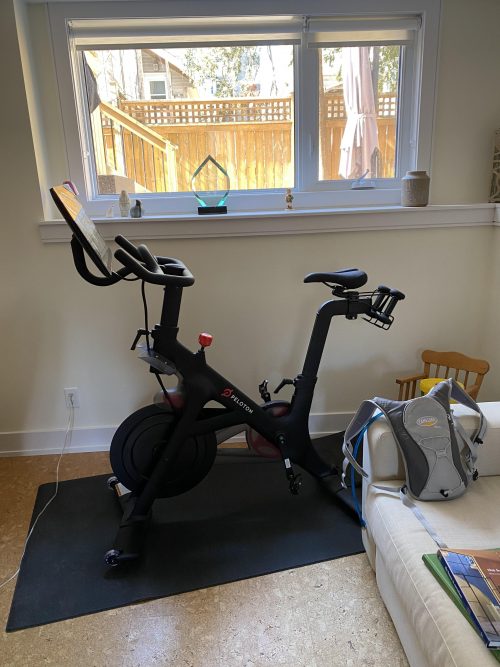“HSR Special Issue Call for Abstracts: Translating Research into Policy and Action” plus 1 more |
| HSR Special Issue Call for Abstracts: Translating Research into Policy and Action Posted: 22 Mar 2021 11:45 AM PDT Sponsored by: Health Services Research and Development (HSR&D) & Quality Enhancement Initiative (QUERI), Veterans Health Administration, U.S. Department of Veterans Affairs Submission deadline: April 30, 2021 Health Services Research (HSR) and the VA HSR&D QUERI program are partnering to publish a Special Issue on Translating Research into Policy and Action, to be co-edited by Melissa Garrido, PhD, Arleen Brown, MD, PhD, and Amy Kilbourne, PhD. A recent Presidential Memorandum emphasizes the need to make policy and programmatic decisions that are "guided by the best available science and data." This memo follows the implementation of the Foundations for Evidence-Based Policymaking Act (Evidence Act), which requires all cabinet-level agencies in the United States government to support policy and budget decisions with rigorous evidence. The HSR&D QUERI program is leading the Veterans Health Administration's response to the Evidence Act and fosters partnerships among researchers, clinicians, and system managers and leaders to maximize the policy impact of research and ultimately improve health outcomes and equity for patients. Both within and outside of the VA, implementation and translation of research findings into action can be done more effectively if the needs of affected communities are taken into account. Community engagement is critical to disseminating, implementing, and sustaining evidence-based programs and policies in the real world. This engagement is crucial to improving health equity. However, the generation of evidence to inform policy and the community impact of policy are often considered separately. Most studies that end up informing implementation of evidence-based programs or policies are conducted in settings or populations that are not representative of those that are most adversely impacted by disparities in health or health care. The goal of this special issue is to highlight research that bridges this gap and engages the community or relevant stakeholders to inform policy and lead to meaningful change. HSR is soliciting papers that are relevant to the development of evidence-based policy and the translation or implementation of research into action. Papers that highlight novel findings and methodological research directions based on implementation science, community-based participatory research, and similar fields and/or seek to inform health equity and promote active participation of individuals most affected by the research are especially welcome, including those that focus on the VA health care system, as well as other systems and payers. Papers must report the results of original investigations. Framework, review, summary, and commentary articles will be solicited separately. Illustrative examples of topics within the area of Translating Research into Policy and Action include but are not limited to:
The deadline for initial submission of abstracts is April 30, 2021. Abstracts may not exceed 300 words and must otherwise be formatted as indicated in the HSR Author Guidelines. These abstracts will be evaluated by a multidisciplinary review panel that will select the best abstracts to receive invitations to submit full manuscripts. The evaluation criteria will include: (1) quality, rigor and originality; (2) significance and usefulness for advancing knowledge about evidence-based policy and the translation of research into action; and (3) clarity of writing and presentation. Manuscripts submitted for the Special Issue will first undergo the same HSR peer review process as all regular manuscripts. However, due to the timeline for publishing the Special Issue, HSR will monitor the progress of manuscripts through the review process and try to shorten it; likewise, authors should expect to be especially prompt in returning revisions. All accepted articles will be published electronically within a few weeks of acceptance using Wiley's Early View process. Articles published through Early View are fully published, appear in PubMed, and can be cited. Approximately 12 articles will be selected, based on the most original and significant work addressing the theme. Accepted manuscripts that are not selected for the Special Issue will be automatically scheduled for print publication in a regular issue. The print publication date for the Special Issue will be June 2022. Key dates for authors: April 30, 2021: Submission deadline for abstracts for the Special Issue May 21, 2021: Notification of manuscript invitation for the Special Issue July 17, 2021: Submission deadline of manuscripts for the Special Issue June 2022: Publication of the Special Issue If you would like to submit your abstract for consideration, please email your abstract and co-author contact information to the editorial office at hsr@aha.org, using the subject line "Special Issue on Translating Research into Policy and Action". The post HSR Special Issue Call for Abstracts: Translating Research into Policy and Action first appeared on The Incidental Economist. |
| Cancer Journal: How to Live with Cancer Posted: 22 Mar 2021 05:00 AM PDT A friend asked me if I had learned anything about how to live with cancer. I laughed — the “live with” part is still in play — but I’ll try to give a helpful answer. That answer is: Even when you are very sick, do your best to maintain your health by getting or staying fit. I need to apologize for that answer because it may be out of reach for many readers. I can focus on fitness because more important things have gone well for me:
Without these foundations, I would surely have been overwhelmed. With them, I have maintained energy, mood, and purpose. A few years ago, we lost a good friend to ovarian cancer that disseminated to her liver. She maintained her energy, dignity, and hospitality throughout the years of her illness. Part of her secret for thriving despite surgeries and chemotherapy was staying fit and upright through long daily walks with her friends and a standard poodle, which she logged on her Fitbit. Witnessing her exemplary life helped prepare us for my cancer. I won’t cure my cancer through exercise (or diet, meditation, or prayer); this is how I live with it. I’m not ‘fighting’ cancer; that’s the Cancer Centre’s job. My job is to stay mobile, attend to my daily needs, care for those I love, write a bit, and prevent depression. Fitness is a means to those ends. You get fit by developing a workout discipline. You don’t get disciplined by gritting your teeth, or at least not just by doing that. Workout discipline comes from joining a team, getting good coaching, evolving a program, and accurately monitoring your effort. Instead of a standard poodle and a Fitbit, I have a King Shepherd puppy and Peloton.  My workout partner, Mika (pronounced ‘Mee Ka’). Mika joined our family in late June, just three days before I was diagnosed. Dogs are ideal teammates. The anthropologist Pat Shipman argues that the domestication of wolves to collaborate on hunts for large mammals enabled homo sapiens to outcompete the neanderthals for the apex predator niche in the Pleistocene. Mika loves to be with me, and she never gets bored. She unfailingly prompts me at walk time. She has a sweet disposition but can destroy anything if she doesn’t get multiple daily walks. Get a dog and, if you can, get a good trainer to help raise her. The Peloton bike arrived on October 12, about a month after the end of radiation therapy but perhaps only a week after the physical experience’s nadir (radiation toxicity accumulates for weeks past your last session).  Me, a week before the end of radiation therapy. I have lost 14 kg (30 lbs) since it started. The bike is overpriced, but what makes it superior to the standard gym stationary bike is the touchscreen display of your pedalling cadence, resistance, power (the watts/joules you are generating), and their averages. Your workout data are saved to the cloud, maintained in an easily accessible history, with lots of graphs and notifications to track your progress. Every fitness app does this kind of thing, but Peloton does it better than anything else I’ve tried.  Cloud-connected device for capturing exertion data and accessing a social network. Also: a stationary bike. The Peloton brand is online spin classes, but that’s not the best way to think about it. Peloton has a touchscreen-equipped treadmill, as well as outdoor running, strength training, yoga, pilates, barre, stretching, and meditation classes that you can access from your phone or tablet. The instructors encourage you to cross-train, which is crucial. Trust me: if cycling is all you do, you will injure yourself. There is a huge library of recorded modular workouts of 5 to 90 minutes that you can do any time. Use these like Lego blocks to build a weekly fitness program. That sounds intimidating. However, although the instructors radiate spin class glamour, many of them are former physical therapists or strength/endurance coaches. Start by choosing workouts based on the music. You’ll absorb cross-training ideas from the instructors’ monologues and the prompts that follow the completion of a workout. What makes all this work is the pricing. You pay one monthly fee rather than paying by the class, so there is no disincentive to doing, for example, a 5-minute guided stretch after each ride. Peloton has an active social network. The touchscreen has a camera, so if you do a live class, you can add a video chat with friends on the same ride. I haven’t explored this much, but I’d like to. I used to be an age group triathlete, and group rides were the core of my training (shout out to the Columbus Triathlon Club!). Perhaps most importantly, the Peloton instructors supply good coaching at internet scale. I recommend Matt Wilpers and his PowerZone training,* but you can pursue lots of other tracks. PowerZone training gives you a method to tailor your workouts to your current fitness. If you are so sick that you can barely turn the pedals, that’s fine. PowerZone reconfigures your touchscreen to rescale the output wattage your pedals are generating to a scale anchored by 0 = no pedal rotation to 7 = a level of exertion that you can maintain for just seconds. The program has a procedure to set these zones to what you can do. Then, when you do a PowerZone class, the instructor calls out a zone, rather than an output wattage (or cadence or resistance) that might be impossible. This gives you a workout that is feasible — and, in measured doses, demanding — for you. The PowerZone workouts — interval training, in spin class drag — give you a path to build those capabilities.  Matt Wilpers. My cycling coach, and maybe 1 million other people’s too. Effective coaching at internet scale is an amazing accomplishment. It is what wellness programs promise but fail to deliver. Of course, Peloton — and dog ownership — succeed mostly because the people who commit to them already love dogs and want to be fit. Perhaps this selection effect is the entire story. Who cares? Select yourself in. Fitness will help you live with and recover from cancer. *Matt Wilpers didn’t invent power zones. Professional cyclists and triathletes all train this way. What he has done is figure out how to teach and support this style of technical, instrumented cycling training for a mass audience. To read the Cancer Posts from the start, please begin here. The post Cancer Journal: How to Live with Cancer first appeared on The Incidental Economist. |
| You are subscribed to email updates from The Incidental Economist. To stop receiving these emails, you may unsubscribe now. | Email delivery powered by Google |
| Google, 1600 Amphitheatre Parkway, Mountain View, CA 94043, United States | |
No comments:
Post a Comment